Chris Jones's Blog, page 12
June 26, 2018
Shooting Killer Action Scenes With a Crew Of Three… Filmmaking for the Crack!
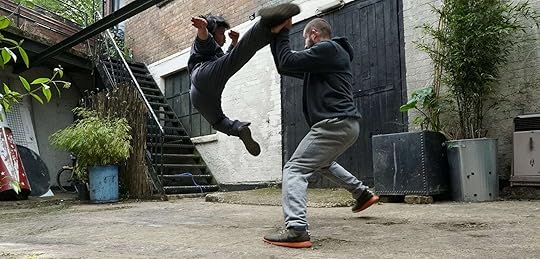
Guest post by Jude Poyer, images by Tom Cheshire
Playing to your strengths and embracing your limitations helps get your film made, and making it fun.
My name is Jude Poyer, I’m a stunt coordinator and action designer from London, England, and I’m an action movie addict.
Less than two weeks ago, before we’d even started shooting “Drug Den Master”, I never imagined being asked to write a blog entry about it. “Drug Den Master” was a low budget passion project. Two stuntmen friends and I conceived it as a love letter to the kinds of movies we grew up watching. Any exposure I might get out of it as an action director, or the boys as fight performers, was secondary. We wanted to have fun, and hopefully reach a few folks who would be entertained too.

Wham! Bam! Thank you Van Damme!
This wasn’t intended for festivals. This was destined for Facebook & YouTube, so the mission brief was different from something with higher aspirations. It needed to be short (under 3mins 30), pacey, and considering it would most likely be viewed on phones & laptops, didn’t justify a lengthy post-production. So it was shot, edited, coloured and online in under a week.
This was self-funded, and not for profit. The budget was low. The main expense was renting the location. Other spends were costumes (Primark) and props like crack pipes (Amazon) and a medical spine (Ebay). We couldn’t afford, nor did we want a large crew. Action tends to require lots of camera set ups. A large crew would have slowed us down. Most of the time, just the 3 of us were on set. Some of the time a friend, Chris G.R. Webb was able to help out with general mucking in, as well as performing as a punching hand and bicep double.
I’m no DOP. Operating camera myself without an AC would mean some shots would likely turn out soft or poorly exposed. The three of us decided to embrace the budgetary & technical shortcomings. We weren’t trying to emulate a James Cameron movie. This was paying homage to kung fu movies of the late 70s, which were often cheaply made, and shown in fleapits on damaged prints, with dodgy subtitles and/or comedic dubbing.
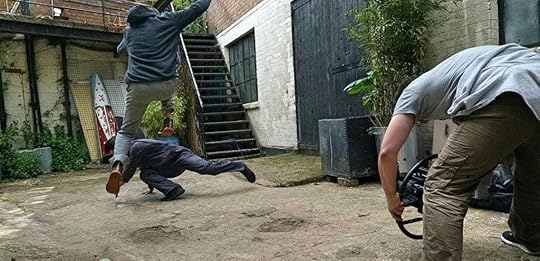
The Martial Art of the Cut (or avoiding Kung Fu Master shots)
My two performers are professional stuntmen. Both have worked extensively in Asia. Andrei is a member of the British Stunt Register. In addition to movies, Craig performs motion capture for best-selling video games. My background as a stunt performer, now coordinator, started with 8 years in Hong Kong.
We all are fans of the Hong Kong approach to action, which is to avoid master shots and coverage. Editing can be an art where the “form” is found during the editing process, but in our humble opinion, for stylised martial arts action it’s usually far better to “shoot for the edit”, Hong Kong montage style.
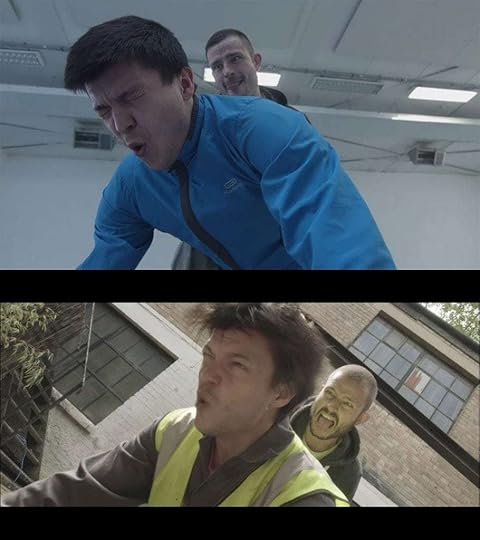
Previz and final shot… Preparation!
Every edit, camera move, angle, lens choice, speed and shutter angle is motivated and planned for to serve the action. I find this approach almost always leads to more dynamic, exciting action. It’s also much easier for the performers to work this way.
Rather than have to perform a long piece of choreography over and over for multiple angles, they know that each “bite size” piece of action for a particular shot is all they will need to perform, so long as the last move overlaps with the first move of the next shot. They are required to remember less choreography, and can perform with more precision, speed and energy, knowing how to “sell” it for that particular angle.
We actually rehearsed and blocked most of the choreography for “Drug Den Master”, some time ago, in a sports centre. On that day I shot previz of much of the key action.
Previz is such a useful tool for planning action. I could try different angles, lenses and speeds, and edit the best version possible. This previz was the blueprint we followed once on location. Previz eliminates the time wasting practice of “will that work…?” or “what if we tried…?” once you are properly shooting.

The Karate (camera) Kit
Most of the short was shot on a Black Magic Ursa Mini pro in Prores 444. I’m a big fan of the Ursa’s Film picture profile, which requires little grading to provide pleasing, filmlike images.
The “flying needle POV” and a couple of other shots were captured on a Panasonic GH5s on a Feiyu Tech A2000 gimbal. A handful of longlens shots & crash zooms required tripod use, but the majority of action was shot handheld, often using a Fig Rig. Last year I had the pleasure of working as Fight Coordinator on “Apostle”, the new film from director Gareth Evans (“The Raid” movies) and saw firsthand how well-suited to action the Fig Rig can be. It’s not a replacement for a Steadicam or a gimbal, it has its own look and uses, and can make handheld shooting not look like you are emulating Paul Greengrass’ shakycam effect.
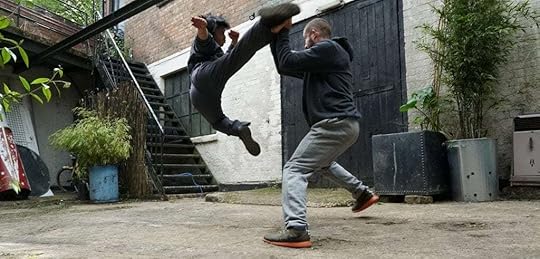
No Rush Hours
I felt we could have shot the short in 2 days, but in the UK on professional movies constantly we experience not enough time is allocated to properly execute fight scenes. We wanted the luxury of not feeling rushed or compromised, so booked the location for three days. When we filmed, our pace was steady, but never hurried. Often, after several setups, we’d stop so the guys could rest and I could assemble the edit. By the end of day 2 we had a finished assembly. So on day 3 we only shot a few hours, having the luxury of reshooting a couple of shots we thought could be executed better, & adding an extra shot which helped a piece of action flow. If you can, I’d strongly suggest editing action as you go, & allocate time to minor reshooting and pickups. That final half day we also had a friend, Tom Cheshire, take some behind the scenes shots & posed photos.
So by day 3 we already had a 95% complete edit, which was done in Adobe Premiere Pro on a Dell Precision mobile workstation (laptop). Over the next day or so, I worked on little tweaks and adjustments to the edit points and adding the sounds. All of the fight noises and foley came from the movie “Drunken Master”. A recent bluray release contained the M&E mix on one track, and that was a very useful resource. Voices came mostly from an old English dub of the film.
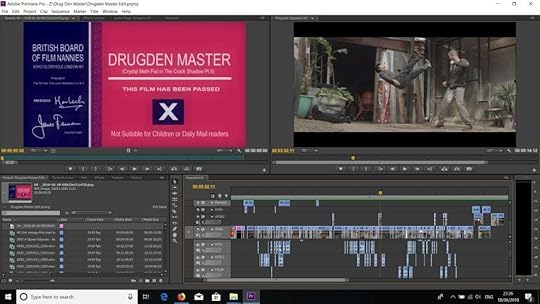
Splice & Dice
I’d always planned to deliver the movie in 1080p HD, with a “letterbox” mask, so edited in a Full HD 24fps timeline. We shot in 4K though, as the extra resolution made reframing in post and getting 2 frame sizes from one setup possible. The idea of moves in post or “punching in” 50% might offend some cinematography purists, but time constraints mean sometimes you do in post what you can’t do on set. As far as I’m concerned, with shots lasting a second or two, a minor drop in resolution is OK, so long as it makes for a better action experience.
Colour grading was done in Premiere. The damaged film effects were achieved using the Magic Bullet Misfire effect plugin, and by overlaying videos found on Youtube of dust specs against black which, was keyed out.
The final piece of the puzzle was a VFX shot of Andrei’s under-the-influence eyes and veins bulging. Andrei worked on this effect himself in After Effects and Mocha, delivering the rendered shot as a TIFF image sequence. Once this was dropped into the timeline, I left the computer to render and export overnight.

Kung Fu Hustling
The finished short was uploaded to Facebook a week after we started shooting with no significant push. We’ve been bowled over by the number of shares, likes and comments. It seems to have resonated with a lot of people (mainly men who rented kung fu and action movies on VHS in the 80s & 90s). It’s very gratifying to see our silly little short being enjoyed.
If you’ve got this far, thank you for reading. We hope you enjoy the short too.
Jude Poyer
For more info, please visit: https://www.facebook.com/drugdenmaster
For more about my work: http://www.reelpowerstunts.com
May 10, 2018
Watch the Behind The Scenes From The President Speaks Shoot in the Oval Office

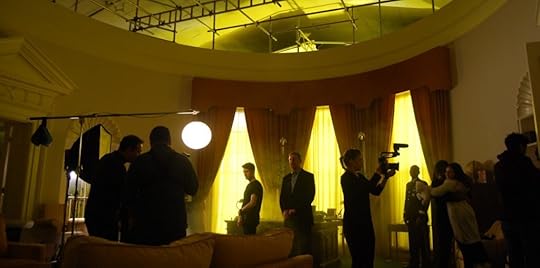
Last Friday we shot the opening scene of The Impact, written by Joe Eszterhas and starring Olivia Williams. We shot in an extraordinary White House Oval Office reconstruction in Norfolk at RAF Coltishall in the sets owned by October Films.
We are SOOOO excited to share this short film about the shoot with Olivia Williams, and even more excited to share the short film once edited and graded. It’s rather special. Expect goosebumps!
This new Presidential scene will be an extraordinary opening for The Impact50 and the cast and crew have truly elevated the whole project, along with all the filmmakers whose films are now coming in daily.
It was a long day, starting at 4am and ending at midnight for me, but what a rush to direct in such an iconic location and with such worldclass talent.

I am particularly delighted with the opening shot, a cinematic and stylised long dolly backwards in ultra slow motion as the president takes onboard that the planet has less than two hours left. It should set the scene with some gravity for the films that follow.
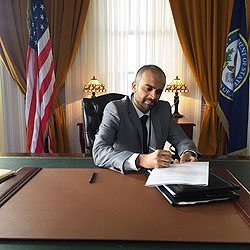 Of course this being the White House set, everyone HAD to have a selfie behind the desk, Omar winning the prize for best photo.
Of course this being the White House set, everyone HAD to have a selfie behind the desk, Omar winning the prize for best photo.
Overall an enormously successful day.
Please do consider contributing to the Crowdfund, it REALLY will make a HUGE difference. And thank you in advance.
Contribute HERE.
More news to follow very soon.
Onwards and upwards!
Chris Jones
My movies www.LivingSpiritGroup.com
My Facebook www.Facebook.com/ChrisJonesFilmmaker
My Twitter @LivingSpiritPix
Sign up to my mailing list for updates on
events, books and free film making tools
April 16, 2018
The Impact50 Trailer Has Been Launched… Get involved and make your micro-budget apocalyptic short

The Impact50 Trailer Has Been Launched… Get involved and make your micro-budget apocalyptic short.
Watch the trailer here for the crowd created feature film project #Impact50, about what would happen in the last few hours of humanity before an asteroid impact.
And if you are a filmmaker, there is still plenty of time for you to get involved and have YOUR work showcased in this revolutionary global project.
Why get involved?
Impact50 is a global filmmaking initiative designed to showcase the best emerging screenwriters and filmmakers.
By featuring lots of short films, no single filmmaker has to carry the burden or production of an entire feature film, but can benefit from all the experience, connections and exposure this project offers.
The screenplay leg is now closed with the 2,000 scripts being whittled down to the selected 55. You can read them all HERE and select one you want to make.
You should of course read the rules and guidelines too HERE.
Optioning a script costs £7 and you MUST upload something BEFORE the closing date of May 31st. There will be an additional month to finalise an edit and upload your final cut / sound mix / grade etc. Start the process HERE.
Last time we did this project (50 Kisses) we ended up being the second biggest UK feature in the week of release and found ourselves in the Guinness Book Of Records! The awards and premiere was a night to remember also.
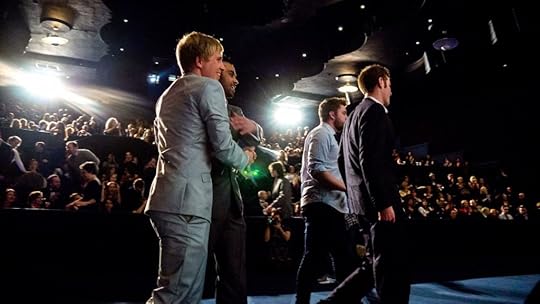
So what to do?
First, rustle up some kit, crew and actors and make space over a weekend in the coming weeks.
Second, choose a script and option it HERE.
Then make it.
Finally, upload an edit to the site. Get feedback. Re-edit and watch some other films and offer feedback there too.
There really is NOTHING stopping you from getting involved in this global epic movie.
Looking forward to seeing your film and shaking your hand at the premiere!
Chris Jones
www.Impact50Film.com
April 4, 2018
The Watchers: Our Long Journey Into Space for #Impact50
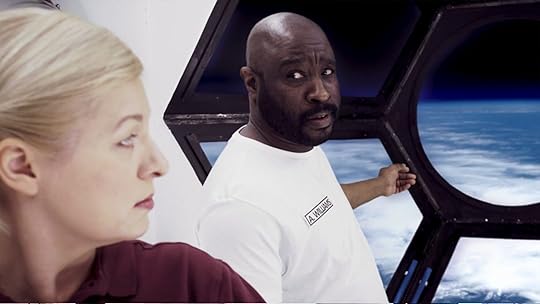
Guest post by Andrew McGee
Who’d have thought making a film set in space would be so tricky?
 The Watchers was shot in late 2016, and through the hard work of an amazing cast and crew, the pre-production and shoot itself went extremely smoothly (even with my own laptop almost falling off the set, see below).
The Watchers was shot in late 2016, and through the hard work of an amazing cast and crew, the pre-production and shoot itself went extremely smoothly (even with my own laptop almost falling off the set, see below).
Jumping straight into such an ambitious film straight after graduating, with professional adult actors and a fully constructed set of the International Space Station (thanks to the wonderful Jason Kelvin), was such an exciting time as a director. I’d like to discuss the process in detail once the film’s out (because the shoot is definitely still fresh in my mind…), but creating zero gravity by pushing a wheelie chair with a broom and hanging tennis balls from fishing wire was certainly a highlight.
The edit was locked soon after wrapping and we brought on composer Thibault Chavanis, whose score has become such an integral part of the film and taken it to new heights (I was banned from making space puns on set. It didn’t last).
Then it came to the visuals effects, and things came to a grinding halt.
The kindness and generosity of everyone who backed the film meant we could get it off the ground and get everything in place for a successful shoot, but the truth is VFX are very expensive and time-consuming for the standard we wanted. We were comparatively low on budget for a professional-looking final product, and didn’t want to compromise on that vision. I’ve done effects for a few of the shots and tried doing it all myself at one point, but we’d be waiting another year for release while I worked out what on earth “parallax” meant.
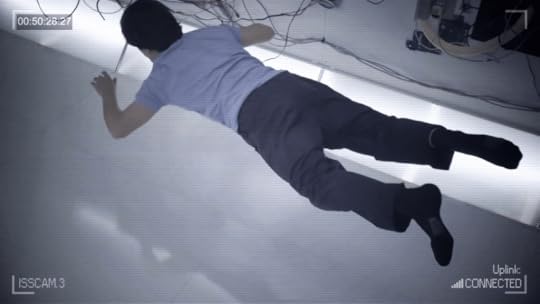
We contacted several production companies and their interns which looked positive for a while, but those options eventually fell through. I then came into contact with a filmmaker and digital compositor who offered to help for a reasonable cost. His professional background was legit and I enjoyed chatting to him, but after weeks turned into months with little to show and progressively more outlandish excuses while avoiding communication, things became very strange and obviously didn’t add up.
We should have moved on sooner, but the hope and assurances that the supposedly finished files were just around the corner was a powerful draw. It’s a learning curve, and a slightly depressing lesson about trust. Anyway, it’s now looking like small claims court for the sake of my small deposit. The film would’ve been out many months ago if it wasn’t for a con man (Andrew Scott Marshall, if any filmmakers come across him).
Thankfully we now have brilliant VFX artist Adam Wilkes on board and performing miracles, and we’re very nearly there.
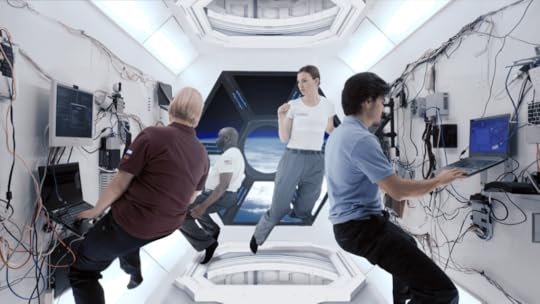
So thank you to everyone who’s followed and supported the film for this long, especially close friends who are likely sick of me going on about it and repeating “it’s getting there”. Obviously we expected it to be completed long ago, but hopefully this has explained the difficulties with post-production for a film with this much green screen and destruction.
Of course there are a few things I’d do differently now, like being bolder with shot choices and more playful with zero gravity, especially having learnt so much as a filmmaker since then. But it’s something I’m incredibly proud to have directed, and to have worked with so many talented people who helped make my original dodgy storyboards a reality. A longer wait inevitably sets higher expectations, but I do hope you think it’s been worth it. It’s definitely a better space film than The Cloverfield Paradox, but that’s not exactly a high bar to reach. It’s a small, intimate story with the backdrop of a Hollywood disaster film (for a fraction of a fraction of the budget), with fantastic performances of four very different characters dealing with an absurd, horrific situation in their own very human ways.
The film’s been in some stage of production for the entirety of my post-uni adult life, and in that time I’ve found a job as an editor, other projects have been written, shot and released, and general life stuff happened in between. I’m not quite sure what life will be like without that Premiere file staring back at me from the desktop, but I do know it’ll involve another stupidly ambitious film to obsess over for a while. Hopefully with fewer con men though.
There are so many people to thank for putting their trust into us and this project, and all will of course be credited at the end of the film. For now I’d just like to give a special big thank you to our Co-Exec Producers: Laurian Gridinoc and Susan Astley, without whom this film simply wouldn’t exist.
So when can we finally see it?
Soon!
Or from April 28th, to be more precise.
Instead of an anticlimactic release online after all this time (and leaving it to the mercy of being watched on phones – the horror), or getting people together just for a 10 minute screening, I thought we’d get a few other filmmaker friends together to premiere their latest shorts for an hour, since there’s rarely an opportunity to share smaller independent films with an immediate audience. This includes another short which ties directly into The Watchers, Can She See Us Daddy, which I co-directed with David Jacobson, the writer and producer of The Watchers.
This will be on the Saturday 28th of April, provisionally at 7.30pm at Met Film School by Ealing Studios, and the film will be viewable online shortly after.
The Watchers and Can she See Us Daddy were primarily made for the Impact50 competition, a great initiative for collaborative filmmaking, then we’ll be submitted to festivals and other competitions (including one run by NASA…).
Not long now, so watch this space!
Andrew McGee
https://www.facebook.com/thewatchersshort/
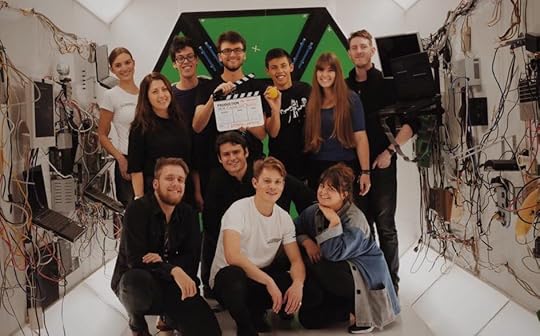
March 23, 2018
Watch inspirational dance film shot over two years, umpteen countries and with four generations of iPhone… and meet the filmmaker

I met filmmaker Miklas Manneke at the Tampere Film Festival a few years ago and he recently shared this video he has shot on his travels. I asked him what he learned making it… (and check out his impressive Instagram too)
Why did you choose to do this?
This is a passion project that started over 2 years ago in China when I started asking strangers to dance for me. The world is in a place right now where there are so many things dividing us, be it boarders, languages or culture. There was something special about sharing that moment with people around the world when they danced. Something that transcended geography.
How did you shoot and edit it?
The project was filmed entirely on iPhones over the course of two years and 4 generations of the phone. The project was edited in premiere with a editor. We spent a long time going through various versions of the edit. It really was about refining the edit and looking for the best moments and how they can flow together. It was also really important to get the extra perspective on what has been filmed.
What was the biggest lessons you learned?
The biggest lesson was that you should’nt be scared to ask. It was about putting myself in the position where you have to approach people and ask them to dance.
That also lead to making the piece too. We had an amazing colorist, editor and sound designer involved who loved the challange of working with iPhone footage. So it’s about embracing an idea and pushing through. The same with the music. I reached out to Young Father and Ninja Tune who loved the video.
What advice would you offer a filmmaker considering something similar?
My advice would be to use what you have available to you, be it a phone or mirrorless camera. Content is what talks to people eventually. With enough determination you can get amazing people involved.
March 16, 2018
Film Directing Fundamentals Part One… Map the DNA of your screenplay so you can bend with the winds of production problems and NEVER snap
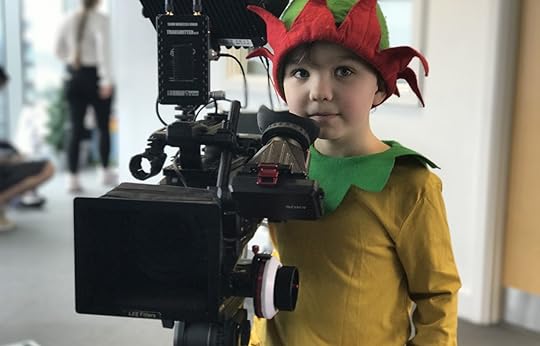
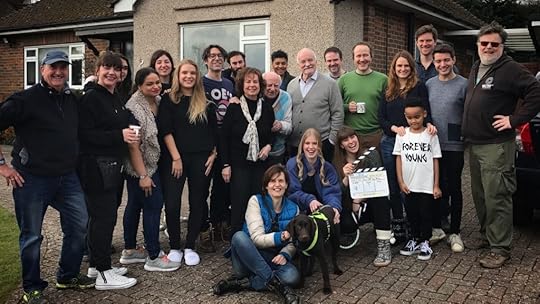
Last week I directed an extraordinarily ambitious short drama for a charity. You will hear more about it in the Winter as it’s a Christmas family film.
Stupidly, on this project we broke all the long established and sensible rules.
It had kids. Lots of kids.
It had a story spanning five decades.
It had a dog!
It was a hard six day shoot that we needed to squeeze into a seemingly impossible four day shoot due to the budget.
It had night shoots.
It even had snow!
As a filmmaker I was pushed to the limit. But then, on reflection, every film should push us to the limit I feel. Otherwise we are not maximising our opportunities and pushing ourselves to grow. Never phone it in. Never.
In the few brief breathers on set I contemplated what was happening and how, astonishingly, I was staying on top of it all and not, literally and figuratively, loosing the plot.
I want to share in a series of blog posts, what I believe to be some of the defining strategies and choices needed to make a low budget film. Not so much simple tips and tricks, more deep strategy and attitude, the stuff that will keep us all afloat amidst the battle to shoot our masterpieces… And we must always believe we are making a masterpiece.
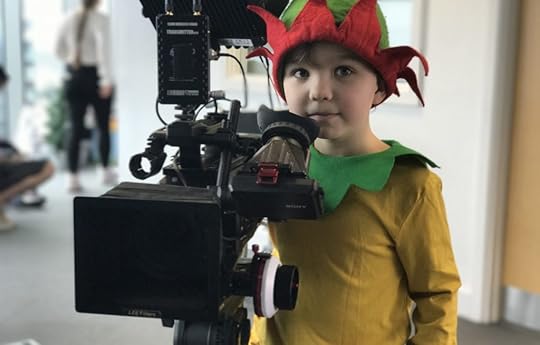
Part One… Understand the DNA of the story and trust the script
Often, when all hell is breaking loose, we need to think on our feet and make radical decisions in the moment. And we need to be right.
As a director, we don’t choose this as a strategy going in. It just happens as actors fall through, schedules slip, locations turn out differently, it rains… yada yada.
How can we make these spur of the moment choices that radically impact the script, and always make the right choice?
How can we bend with the wind and never snap?
In this instance, knowledge is power.
Knowing the script and story intimately will be your greatest ally. Whenever I found myself at the crossroads of ‘the old plan having gone to shit for reasons beyond almost everyones control’, and the ‘new direction thrust upon us’, I would ask myself, what is in the DNA of this scene? What must happen? Why? What is the single most important thing? And how can we achieve that with the resources at hand?
Can characters be combined or switched? Can scenes be merged in order to clawback some schedule? Can that three page scene be reduced to a quarter page? The famous Indiana Jones sword fight is a good example of this.
Surprisingly, the answer will almost always presents itself and often, it can be an improvement on what was written.
This happens because we know deep inside, what we need to get from the scene. Experience, and a great team surrounding us, a familiar team, also make these often inevitable shifts in direction much easier.
This process in itself can reduce (and that’s a good thing) a screenplay that is over written into a leaner, tighter more focused piece of drama.
But you MUST know what is in the DNA of the scene so that IF you are forced to abandon setting, sometimes characters, and find you no longer have the ability to shoot great coverage (there is only time for one shot and not the four you planned etc)… Then you KNOW what to do, instinctively, elegantly and with confidence.
On the last day of the shoot just gone, we had a problem. A big problem. The last scene was a flashback to 1967 in a new location, a home at Christmas. We had planned it in one location, shooting what we needed to shoot in 2018 over a couple of days, then dressing one room to look like 1967. The room we had was perfect.
Of course that location dropped through just before we started shooting. The new location was even better for the 2018 scenes, but once we got there, it was clear it would never work for our 1967 scenes, no matter how skilled the dressing.
The production team worked the street, knocking on doors and charming people, but we came up short.
What can we do?
Let’s change the location of the drama. Where else could it happen?
On the street? No, too much 2018 will be in shot?
In the garden? Possibly, but it’s a bit weird.
What’s in the DNA? What MUST happen?
In the story, the father character injures his foot and cannot walk. This happens on the way to a childrens ward in a hospital where he plays Father Christmas every year. What to do? He cannot let the kids down. Who else could play Father Christmas? His son… And so the his son, the lead character in the film, becomes a reluctant Father Christmas.
That’s the DNA. That’s what MUST happen.
So how can we sell that we are in 1967?
What if we get an old car, a car from 1967, and shoot it at night so we cannot see the house clearly? That would be a great setting and would work for the period.
What if the mother character slams the car door on the fathers foot? That would work.
What if the whole scene plays out in and around the car?
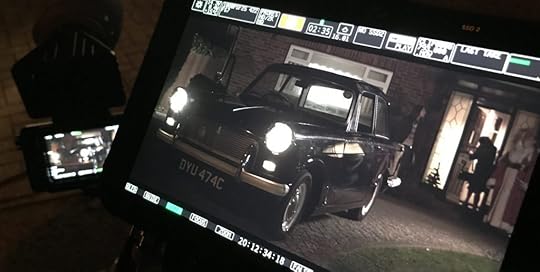
BOOM! A few hours later and Judy had found several options for old cars and later that day, against all odds, we shot it.
The ability to convey this new vision to the cast and crew is essential too. You must be able to present this new version with certainty, And you can and will IF you know in your heart that you have delivered on the core needs of the scene.
The cast and crew are looking for certainty in their leader. Remember this. It’s fundamental. Make it look effortless too, like you are in complete control. Always.
Our experience from past shoots and the familiarity with crew will help in this regard too. The more you shoot, the better you get at problem solving, and problem solving FAST. The more you work with people, the more you figure out each others weaknesses and strengths. The more you develop shorthand and confidence. TRUST.
Above all, take a GREAT script to set, Then trust what is written on the page. It will save your film if you do this.
I cannot tell you how many times I have found myself in a situation that was unplanned and with no immediate strategy to fix it. What to do?
Trust the script!
SHOOT THE SCRIPT.
Shoot the DNA of the script.
Because the script worked BEFORE the shoot. It will work after the shoot.
This is not licence to rewrite on set, this is about refining the script on set.
Stick to the plan. Stick to the DNA.
Rewrite at your peril. Writing is hard enough when there are no production pressures and endless days to get it right, let alone 32 minutes over lunch. And major changes often have often and unforeseen consequences that only appear in the edit.
Trust the script. Dig deep to find the DNA, and shoot that.
March 11, 2018
Creating historical ‘Hero Photo Props’ for your shoot… Top Nine Tips
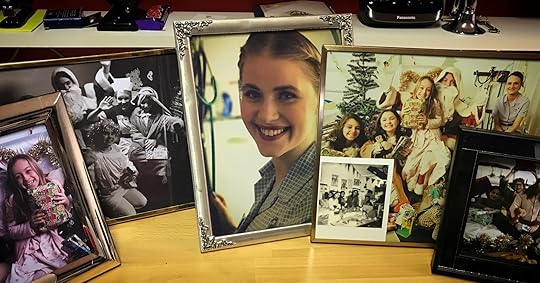

Nothing bothers me more in a film than a REALLY bad photo prop – you know where they show you a photo from wayback when, and it’s a terribly photoshopped image. Fail!
I have made several films now with historical photo props, some of which are featured ‘hero’ props on which plot revelations revolve… And I knew that it only takes one bad prop to bounce an audience out of a story, and so I have always insisted on making these photo props myself.
These props are actually as important as any single shot in you film. Don’t delegate it like you might delegate getting other props.
Then adds the production issue… You need your cast in both situation and costume in order to get the image, to take the photo. Sometimes it’s an image that is photographed inside the narrative (so the photo prop cannot exist in other scenes until the scene where the photo is taken has itself been shot). The photo cannot exist before the scene in which it is taken is filmed. This is a production and scheduling headache. Yikes!
Add the usual production pressure cooker, the cast only being confirmed at the last minute, budgets, schedules… Well this is why so many badly Photoshopped images make it into films.
Here’s what I have learned.
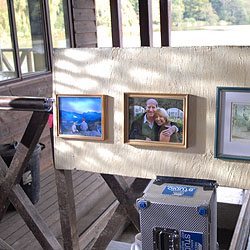 Don’t shoot it in the main shoot
Don’t shoot it in the main shootIf you can, just do the shot of the actors looking at the photo and stage it so that you can shoot the photo (the reverse shot in effect) later in the shoot or in pickups. This will give you time to get this all important props and photos spot on. A ‘hero -prop’ photo is a heavily featured prop and needs to be world class.
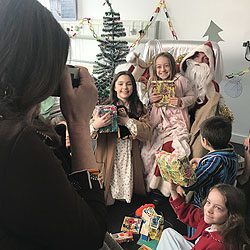 Treat generating this shot like it’s part of the shoot
Treat generating this shot like it’s part of the shootOften you shoot a scene, and then you need to stage the scene again to take the photo to make the prop. It’s annoying to most cast and crew as everyone wants to move on. I get it. But shooting this photo now, and taking five minutes to get it right, will save you tons of heartache later.
 Use your iPhone
Use your iPhoneOn the shoot we just did, I shot all the photos myself on my iPhone, using the fake depth of field effect and then ageing them in a combination of iPhone apps and Instagram. The results were amazing. I printed them out on matte photo paper and they look great.
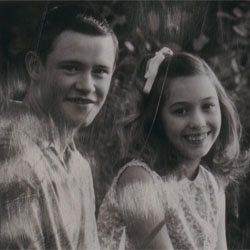 Age then old school
Age then old schoolYou can, and should, distress and age the images further by creasing and scratching etc.
 Photo Frames
Photo FramesIf you are showing a number of images in frames, go for different sizes and get frames that are era specific, supporting the narrative. Tell a story over time with the photo frames themselves.
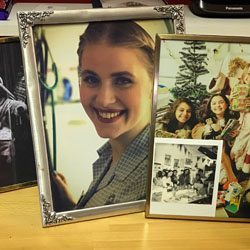 Killer Image
Killer ImageOften you just need a single photo to be ‘the one’, the picture that pulls the focus of the drama. The others around it solidify the illusion and must be great, but one will be where the audience is drawn. Make sure this one image is world class, and I would also say large so all detail can be taken in and it dominates.
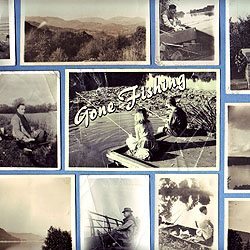 Hide the fakes among real photos
Hide the fakes among real photosUse real photos from the era in order to hide the fakes inbetween. Real photos always sell the era authentically and convey the events and emotion powerfully. They also cost nothing to stage, they already exist. Time to dig through the shoeboxes in the attic. Friends have also sent me scans after social media shout outs for specific images.
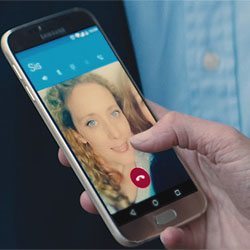 After Effects
After EffectsIt’s not too hard to do a visual effect if you need to add a photo to a frame, or replace one. Of course I would VERY strongly recommend not doing this for all the obvious reasons, but if it’s a choice between a less than brilliant photo prop and spending a little time and resources on a special effect, I would chose the latter. We have done lots of these with Phone image replacements to great effect (though phones are easier as they are their own light source).
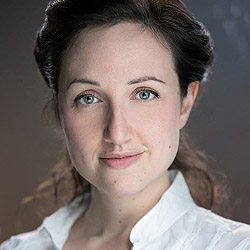 Never use the actors acting headshot
Never use the actors acting headshotI have seen this so many times and ever time I cringe. Make the effort and get a photo that does not look like actors headshot sent out by agents. Photo here is the fabulously talented Cera Rose-Pickering and you can follow her on Instagram @misscerarose)
Do you have any tips of your own to add?
Onwards and upwards!
Chris Jones
My movies www.LivingSpiritGroup.com
My Facebook www.Facebook.com/ChrisJonesFilmmaker
My Twitter @LivingSpiritPix
Sign up to my mailing list for updates on
events, books and free film making tools
February 27, 2018
How I made a SciFi Epic Film on a shoestring… Making KIDDO
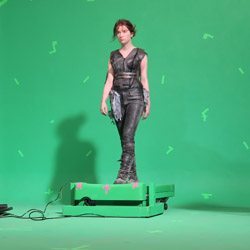
 I recently saw a staggering short teaser for a sci-fi epic called KIDDO and made on a shoestring with tons of love.
I recently saw a staggering short teaser for a sci-fi epic called KIDDO and made on a shoestring with tons of love.
I asked the filmmaker Tito Fernandes more about why and how he went about it.
Q – Why did you choose to make this epic sci-fi short?
Tito – First of all I did to get it out of my system. It was a project that I conceived along side my brother 6 years ago that recurrently kept coming up and poking us around. So much so that something had to be done. First we a ttempted to make the feature into a short film but soon realised we couldn’t afford it. Therefore we compressed the same idea further and, although the reality was that it was still out of our means, it was more tangible. It took me 3 years to get the courage to jump head first and after 5 months of pre-prod I secured 2 days in a London studio. Once that was done it took another 2 years to process all of the material needed to get to the current result. A great crew was key on the shoot as well as the scattered team that did the post all over the world.
ttempted to make the feature into a short film but soon realised we couldn’t afford it. Therefore we compressed the same idea further and, although the reality was that it was still out of our means, it was more tangible. It took me 3 years to get the courage to jump head first and after 5 months of pre-prod I secured 2 days in a London studio. Once that was done it took another 2 years to process all of the material needed to get to the current result. A great crew was key on the shoot as well as the scattered team that did the post all over the world.
Q – What was your main ambition for the film?
Tito – The ambition is to get exposure and perhaps get noticed. I want to evolve my career into directing full time and this is one of my stepping stones. The dream would be to get someone interested and get the idea optioned for further development.
 Q – What was your process? Particularly with such accomplished visual effects?
Q – What was your process? Particularly with such accomplished visual effects?
Tito – As I described above, the process was a very traditional one, pre-production and production was standard within the green-screen way of shooting film and post was slightly off key in the way it all come together. The nature of having a team remotely linked and cooperating with the latest technology, was both humbling and super exciting. It was a nightmare to produce and keep track of everything but it’s also something I would have struggled to do even 5 years ago. In all we had artists in 25 cities from 15 countries and plenty of people in London for final assembly. KIDDO is a labour of love, dedication, persistence and courage. Hope the images evoke those feelings.
 Q – What are the biggest lessons you have learned making KIDDO?
Q – What are the biggest lessons you have learned making KIDDO?
Tito – What I learned the most is that there’s still people out there that are in the game for the passion of creating good imagery. Out of 10 responses to my invitation 9 were NOs, but one was a YES or a MAYBE. This was reflected throughout the whole process and allowed for my spirit to sustain the hope it needed to persist.
Resilience became my biggest asset and continuing to reach out became an escape. Eventually all pieces fell into place and it all happened. A lot of it had to be done by myself including all stages of VFX because when you lack the funds, and even though artist are tremendously generous with their time, you can only count on yourself to do the tasks that no one else wants to do. But that drive and leadership by example kept everyone believing how serious this project is and how serious you are in wanting to complete the project, which in the end is the hardest and biggest accomplishment of all.
On a personal level, that quickly became my main objective as morally and ethically I owed it to every single person that had invested their time and talent into this piece of work. I just hope they’re are proud to have been part of the ride.
You can read more about KIDDO and follow / like their social media channels with the links below.
https://facebook.com/KiddoMovie
https://instagram.com/kiddo_movie
https://imdb.me/titofernandes
https://instagram.com/titomfernandes
Onwards and upwards!
Chris Jones
My movies www.LivingSpiritGroup.com
My Facebook www.Facebook.com/ChrisJonesFilmmaker
My Twitter @LivingSpiritPix
Sign up to my mailing list for updates on events, books and free film making tools

February 23, 2018
Two important lessons about running auditions and castings for a film


Actors are extraordinary and courageous.
I just spent a day casting a film we are making in a few weeks time and saw scores of for several parts. I will be posting more on this next week but I wanted to share two insights that struck me, one about writing and directing, the second about the trial of being an actor and why we can learn from their courage.
Why Casting Will Improve Your Script
I like to improvise in castings, not just read lines from the script.
This gives me a sense of who the actor really is and how they can reflect the written part.
For me, it’s not about slavishly making the actor perform my supposedly great writing, it’s about freeing them to interpret it, to bring the most creative, authentic and courageous self, and allowing them to find it.
Of course this makes for oftentimes electrifying auditions.
What I have found is that actors will more often than not ‘lean in’ to that proposition, embrace and play with it. They love it. And then then the magic of creativity flows. They will discover detail, subtext, honesty, moments, interpretations… all manner of good stuff.
Alongside my notes of who resonates with the parts more than others, are copious notes about individual performances that I will literally write into the script that night. Sometimes it’s a small detail, sometimes it’s a huge emotional moment that isn’t on the page yet.
In the search for the right cast, you may well experience a hundred outstanding performers interpreting your words. That experience is like finding creative fairy dust that will improve the magic in your story. They will fix plot problems you didn’t know you had. They will find ways to tell your story without dialogue. They will improve your script, so long as you listen with an open heart and mind.
To my second point.
The experience of auditioning is both humbling and exhilarating.
Seeing hundreds of actors, all ages and background, come in and give 100% in the face of terrifying statistical odds… well it reminds us all that we can all toughen our skin a little.
These guys EXPECT rejection and still give it their all. And they do it by being more vulnerable than most writers or filmmakers will ever experience. That is really something to behold and celebrate.
So let’s not EVER be assholes in auditions. Let’s work hard to acknowledge people by looking them in the eye. Let’s ask how far they have come. Let’s shake hands and thank them. These are strangers who want to collaborate with you, and to prove it, right now and in front of you, with very little prep, they will share their heart, mind and soul for a few minutes, and then leave with a smile and the expectation of rejection.
These people are fucking warriors.
These people are the epicentre of our stories.
These people are actors.
Onwards and upwards!
Chris Jones
My movies www.LivingSpiritGroup.com
My Facebook www.Facebook.com/ChrisJonesFilmmaker
My Twitter @LivingSpiritPix
Sign up to my mailing list for updates on events, books and free film making tools
January 12, 2018
The Impact50 Countdown Has Begun… 100 days left to make your film

 In just over 100 days, the Impact50 filmmaking challenge will close. The closing date is April 30th at midnight UK time.
In just over 100 days, the Impact50 filmmaking challenge will close. The closing date is April 30th at midnight UK time.
Can you make a short film from a two page script about the end of the world?
If so, invest a weekend and become part of the Impact50 feature film challenge.
Teams from around the world have begun optioning scripts and making their films now, many of which you can watch on the site.
We already have the first submissions on the site to watch, and we know that many many more filmmakers are playing this game more like poker and keeping their entries close to their chest.
 Want to be part of this global filmmaking adventure?
Want to be part of this global filmmaking adventure?
Here’s what to do…
Option one of the 55 scripts HERE.
Make a film and submit it to us.
Get feedback and resubmit it if you like.
We will then take the best submissions and make a feature film.
Last time we did this with ‘50 Kisses’, we ended up in the Guinness Book of Records! This time we are going for the most directors on a feature film, as well as most screenwriters, so you could make it into the record books!
 Guides and rules are HERE.
Guides and rules are HERE.
The countdown is ticking… Act now…
Chris Jones
www.Impact50film.com



